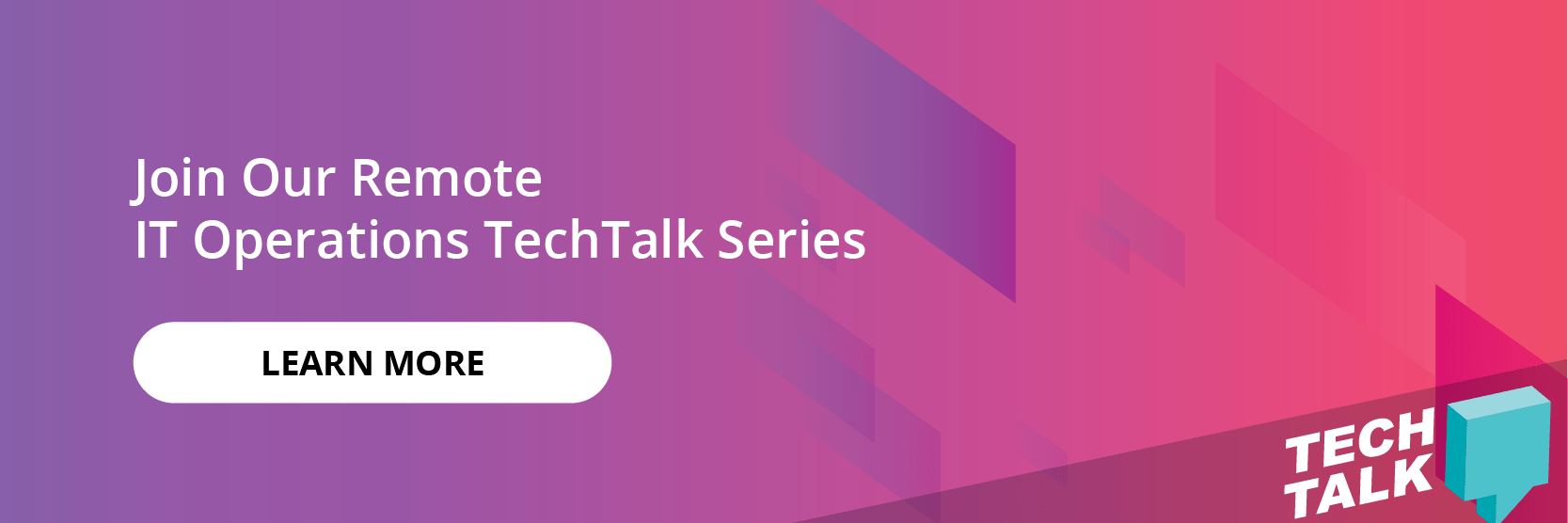This is part two in our blog series on Digital Transformation during Covid-19. You can read the first blog here.
The global pandemic and subsequent lockdowns affecting over half the world’s population are already affecting digital transformation, on both an organizational and employee level. Starting by improving your internal customer experience is a good first step, after which digital transformation efforts can and should focus on enhancing the external customer experience in every way. IT leaders are front and center of both efforts. But how to develop a smart framework for building on these initiatives now?
In her 2019 report “The IT Ops Evolution,” 451 Research senior analyst Nancy Gohring developed an IT Operations maturity model which is a useful rubric to institute continual, progressive change. We spent time reviewing this model in our recent webinar and Nancy discusses the IT Ops maturity curve in this video:
In the video, Gohring outlines these four categories for growth:
- Traditional organizations maintain separate development and operations teams and closely follow ITIL approaches.
- Maturing businesses begin to embrace DevOps, with a split between DevOps and central IT Ops teams. They add tools across business units to create more visibility and agility. Yet then, teams struggle with tool sprawl and other issues that negatively impact application performance.
- Modern organizations have transitioned the function of their IT Ops team to act as a monitoring tools service provider and center of expertise for intelligently performing monitoring and incident response in cloud-native environments. This is characterized also by a move toward service “observability”, which focuses on the development of the application and rich instrumentation so that operators can ask arbitrary questions about how the software works.
- Future organizations, the ideal operations environment, place automation as a central focus. Teams spend much of their time developing automation and ensuring monitoring tools accurately drive automations.
To move the needle of the digital business, IT should create a roadmap to advance through these stages. Let’s first explore in more detail the Maturing and Modern categories.
Maturing
Maturing organizations increasingly using cloud-native technologies such as containers, Kubernetes and serverless infrastructure, according to 451 Research. These are positive signs for modernization but they come with growing pains. DevOps teams have emerged alongside IT Ops teams, and monitoring operations functions are often split between these two teams. DevOps teams tend to be responsible for application performance, while IT operations teams need to maintain underlying infrastructure – the database and the network for instance, according to Gohring, in the report. “We think it’s a strong positive that there’s an understanding that monitoring is a key part of the DevOps process, but we also think this understanding can contribute to tool sprawl issues, particularly in larger organizations when there isn’t a centralized strategy for monitoring,” she writes. In my last post I pointed to the Digital Enterprise Journal report, which finds that 39% of organizations are using 10 or more IT monitoring tools, while 18% are using more than 20.
Modern
In organizations with Modern infrastructure and operations, IT Ops teams are adding software or site reliability engineers (SREs), according to 451 Research. SREs focus on applying automation to IT operations and continually analyzing and improving incident response processes. IT operations teams can reduce tool sprawl by centrally managing monitoring tools and offering them as a service to the DevOps team. These are attempts to more closely merge DevOps and ITOps teams, balancing agility with stability.
Another characteristic of modern organizations is the incorporation of AI and machine learning technologies (known as AIOps), which can discover hidden resources and threats, uncover patterns, filter the noise, and aid decision-making. Consider the classic IT operations manual, the hopelessly outdated runbook. The AI-enhanced runbook lives within IT operations systems and can learn, adapt and provide suggestions based on what’s happening in the moment and patterns detected from the past.
Filling the Gap
Moving to the next phase of maturity is not a straightforward recipe. Yet industry research and conversations with IT directors indicates top areas of focus:
- Skills. Cloud computing, DevOps and AI skills and knowledge have been in demand for some time and these skills gaps continue to rise, affecting 81% of North American IT departments, according to a survey by Global Knowledge. DevOps is the most in-demand skill, cited by 64%, followed by cloud certifications (61%), industry domain knowledge (56%), development (50%) data science (47%) and machine learning (44%), according to the “OpsRamp Report on Modern IT Operations in the Digital Age.” IT operations people, not just developers, need to learn these skills to understand the changing requirements for managing distributed, ephemeral, cloud-native environments.
- New processes & structures. A centralized operations model is where modern IT organizations are going, if not already there. This means a focus on tools/data consolidation and integration to obtain a unified view of infrastructure health and a managed process for evaluating technology and training personnel on best practices. We call it IT operations as a service. A key enabler is a multi-tier, multi-tenant approach to IT operations management (ITOM) for greater efficiency.
- Intelligent, adaptive technology. Using machine-learning based automation, IT organizations can start getting ahead of the maturity curve. They will begin to see faster correlations between alert and incident data and receive guidance on best next steps. Integrated tools and data will allow operators to map server and network metrics to business services and user experiences. Check out our Guide to Everything AIOps and this 7-step plan for successful AIOps implementations.
Circling back to digital transformation, we can see how putting in time and effort to become a “mature” IT operations organization can pay off, especially during this period of remote IT operations where resiliency and agility are so critical. These “top-performing” organizations will see MTTR lowered to 38 minutes from 224 minutes, according to the DEJ report. They will know which services deserve the highest priority, they won’t waste time chasing down alerts that don’t matter and they’ll find root causes faster. The end result? New digital business initiatives will have a higher chance of success and customers and partners will have better digital experiences because IT can support them consistently even as requirements change.
Next Steps:
- Join our Tech Talks webinar, April 15: “Command Center, Outdated, or Perfect Time for IT Operations?”
- Learn how OpsRamp can improve user experiences and resiliency during Covid-19.
- Get tips on how to manage IT during a pandemic.






